Abstract
OBJECTIVES. Increasing concern with the quality of gains in life years has led to the development of a new synthetic indicator of population health:health expectancy. Until now, calculations have been made for physical disabilities only. A first estimate of mental health expectancy is presented: dementia-free life expectancy. METHODS. Sullivan's method was used to calculate dementia-free life expectancy for a random representative sample of 4134 persons over 65 years of age in the Bordeaux region of France. The diagnosis of senile dementia was made in two stages, based on Diagnostic and Statistical Manual of Mental Disorders (DSM-III-R) criteria. RESULTS. At 65 years of age, a person's dementia-free life expectancy is 16.9 years within a total life-expectancy of 17.7 years; it decreases with age in parallel with the decrease in total life expectancy so that life expectancy with dementia stays constant at 0.8 years. Although dementia prevalence increases with age, if the prevalence is adjusted for mortality, the largest number of persons with dementia are in their early eighties. At each age women have a higher dementia-free life expectancy. CONCLUSIONS. Trends in dementia-free life expectancy are similar to those found in disability-free life expectancy. Because the dementia prevalence rates used in this estimate resemble a general model derived from meta-analysis, it can be assumed that similar results will be found in other Western countries with similar mortality rates.
Full text
PDF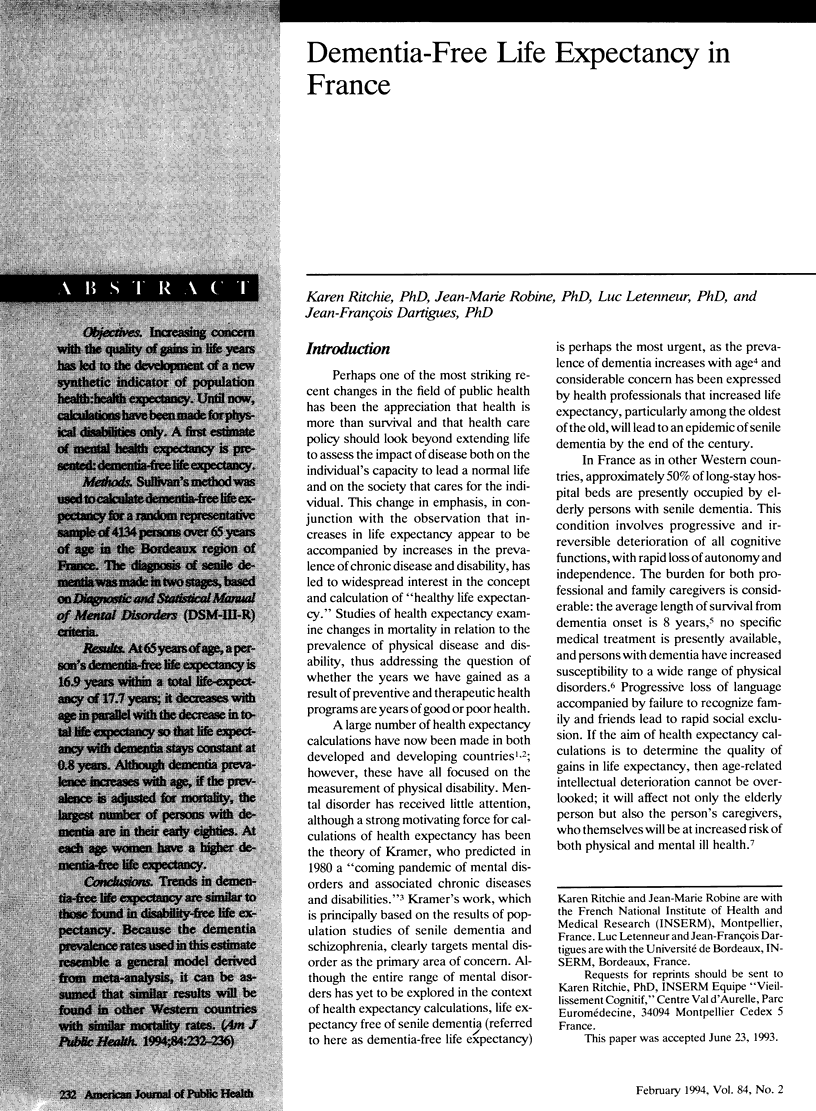
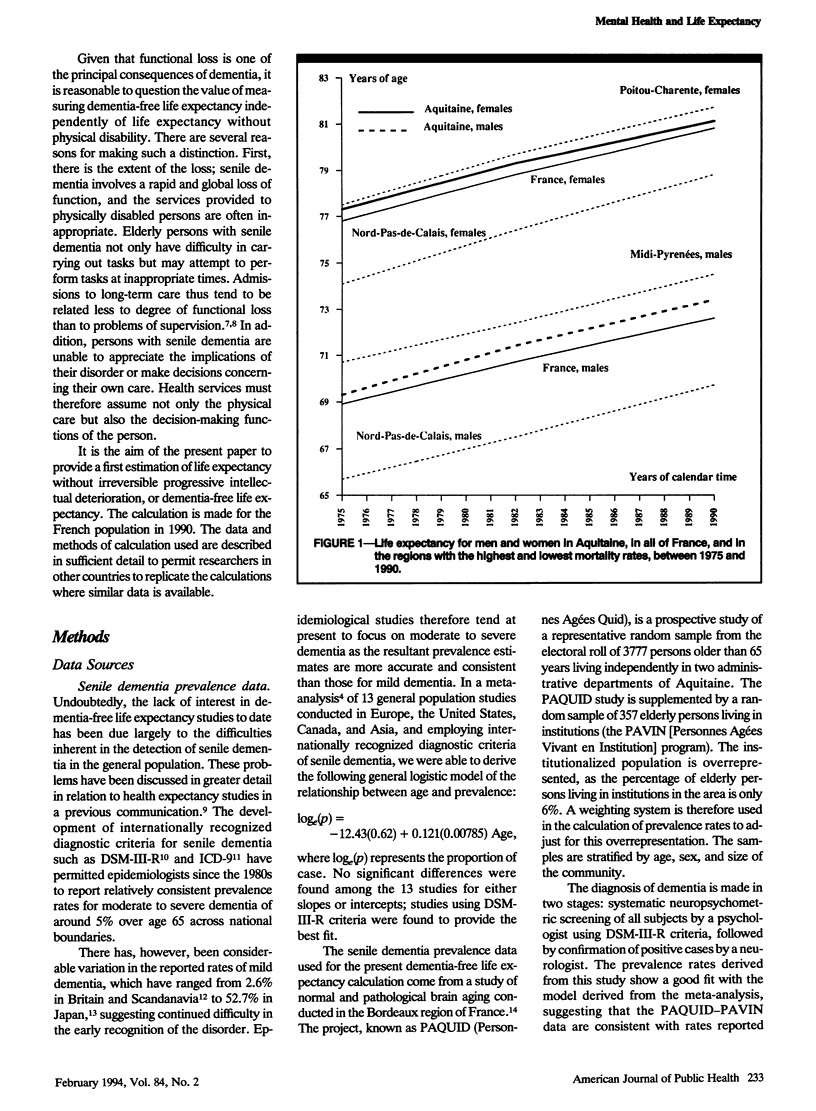
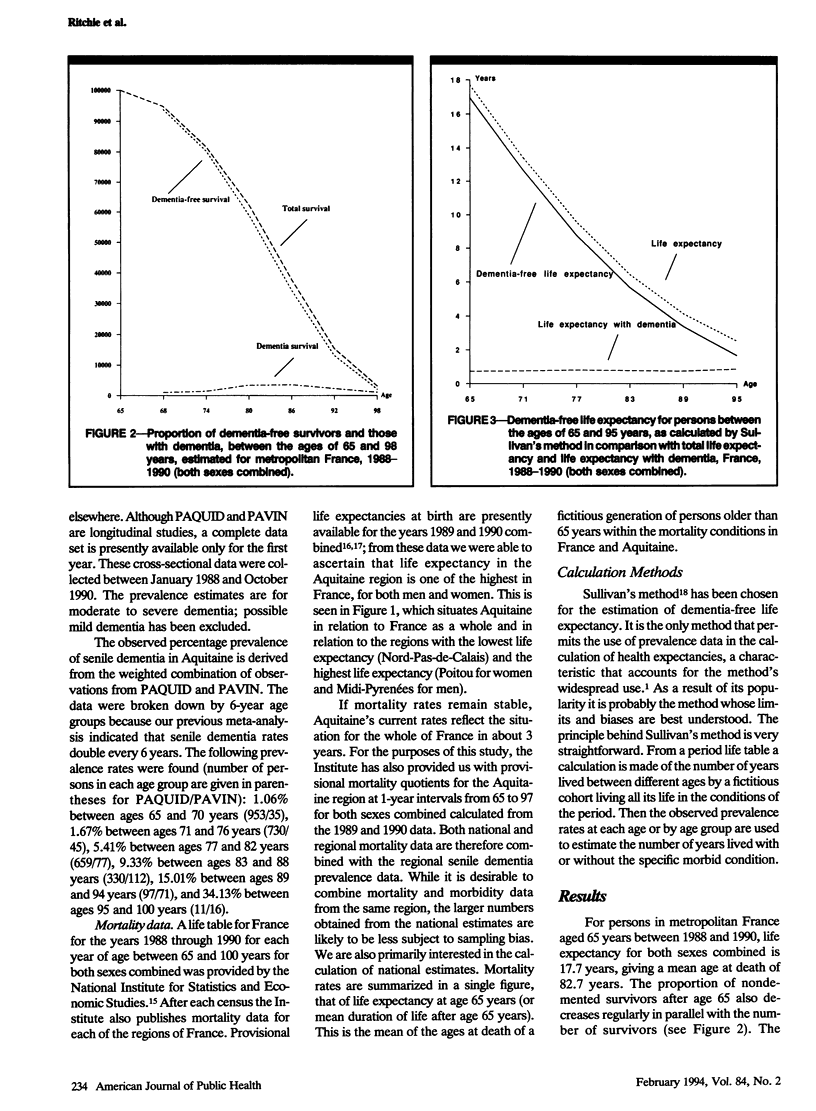
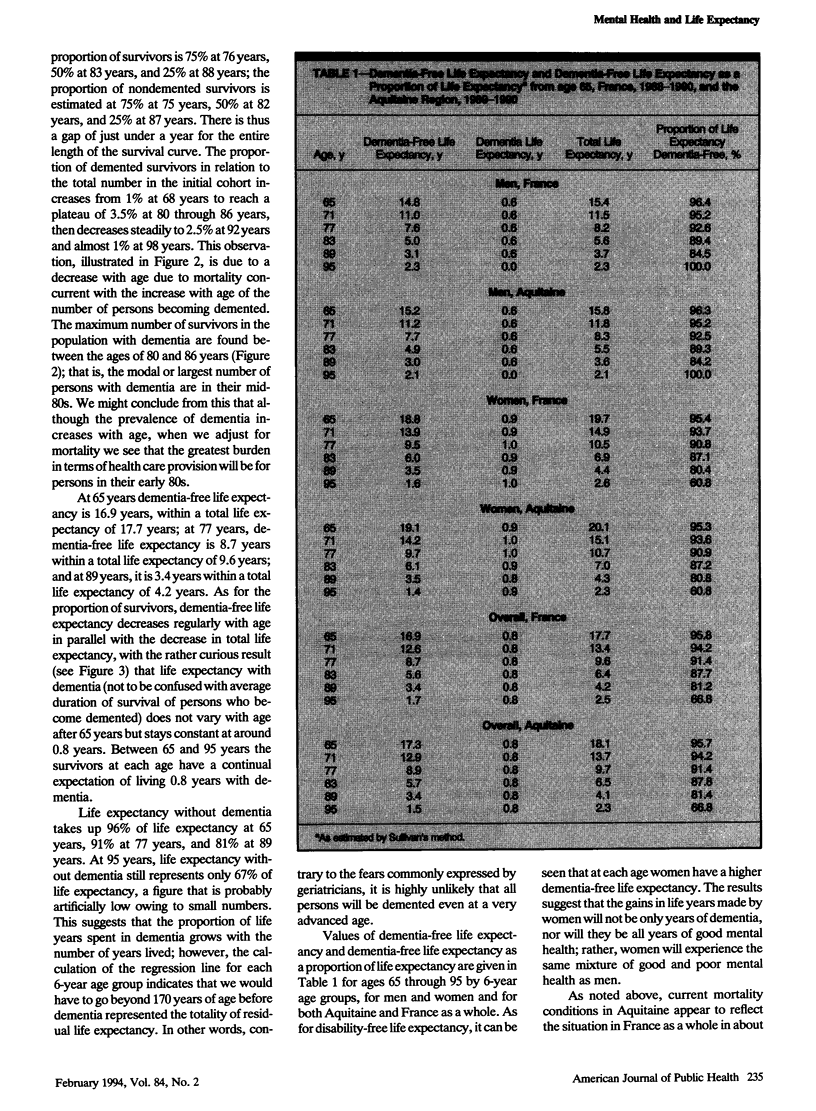
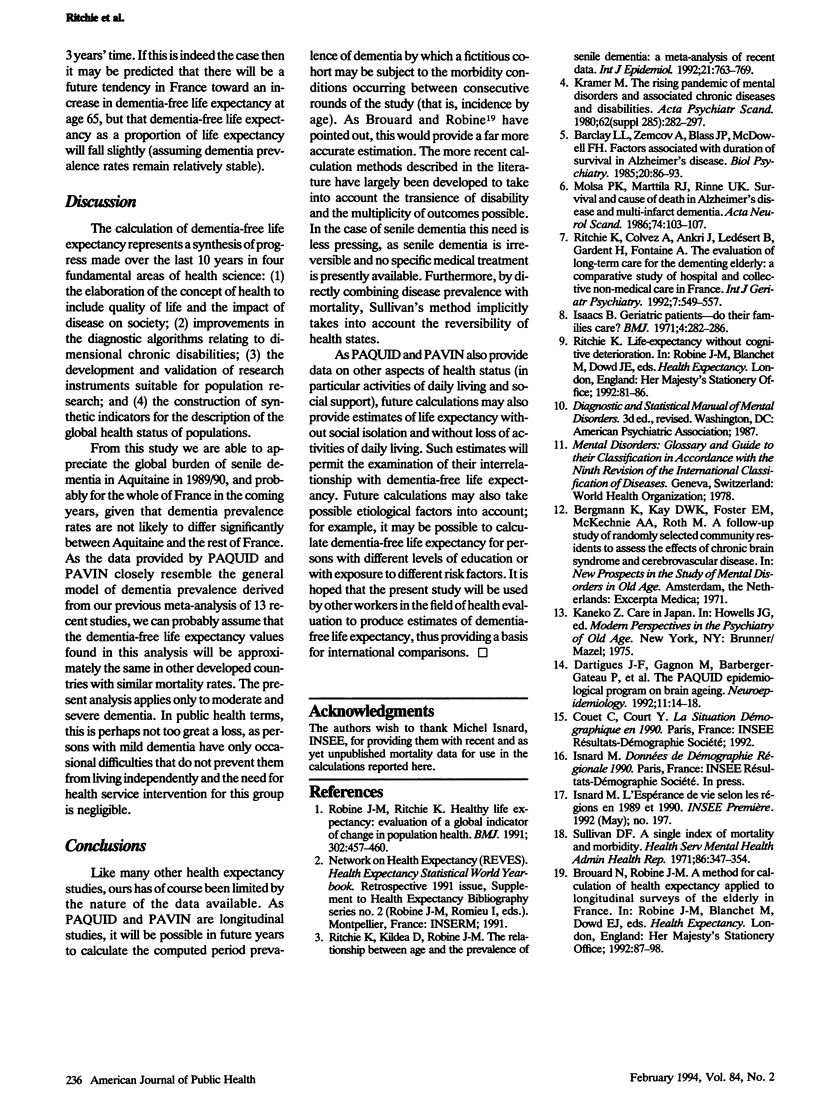
Selected References
These references are in PubMed. This may not be the complete list of references from this article.
- Barclay L. L., Zemcov A., Blass J. P., McDowell F. H. Factors associated with duration of survival in Alzheimer's disease. Biol Psychiatry. 1985 Jan;20(1):86–93. doi: 10.1016/0006-3223(85)90139-8. [DOI] [PubMed] [Google Scholar]
- Dartigues J. F., Gagnon M., Barberger-Gateau P., Letenneur L., Commenges D., Sauvel C., Michel P., Salamon R. The Paquid epidemiological program on brain ageing. Neuroepidemiology. 1992;11 (Suppl 1):14–18. doi: 10.1159/000110955. [DOI] [PubMed] [Google Scholar]
- Isaacs B. Geriatric patients: do their families care? Br Med J. 1971 Oct 30;4(5782):282–286. doi: 10.1136/bmj.4.5782.282. [DOI] [PMC free article] [PubMed] [Google Scholar]
- Mölsä P. K., Marttila R. J., Rinne U. K. Survival and cause of death in Alzheimer's disease and multi-infarct dementia. Acta Neurol Scand. 1986 Aug;74(2):103–107. doi: 10.1111/j.1600-0404.1986.tb04634.x. [DOI] [PubMed] [Google Scholar]
- Ritchie K., Kildea D., Robine J. M. The relationship between age and the prevalence of senile dementia: a meta-analysis of recent data. Int J Epidemiol. 1992 Aug;21(4):763–769. doi: 10.1093/ije/21.4.763. [DOI] [PubMed] [Google Scholar]
- Robine J. M., Ritchie K. Healthy life expectancy: evaluation of global indicator of change in population health. BMJ. 1991 Feb 23;302(6774):457–460. doi: 10.1136/bmj.302.6774.457. [DOI] [PMC free article] [PubMed] [Google Scholar]
- Sullivan D. F. A single index of mortality and morbidity. HSMHA Health Rep. 1971 Apr;86(4):347–354. [PMC free article] [PubMed] [Google Scholar]


